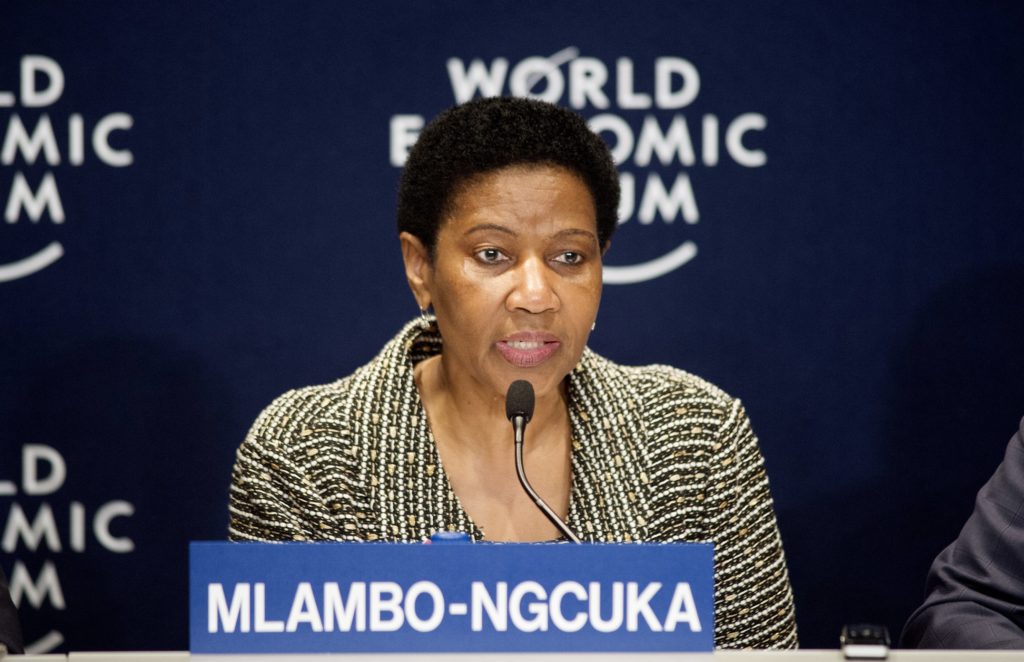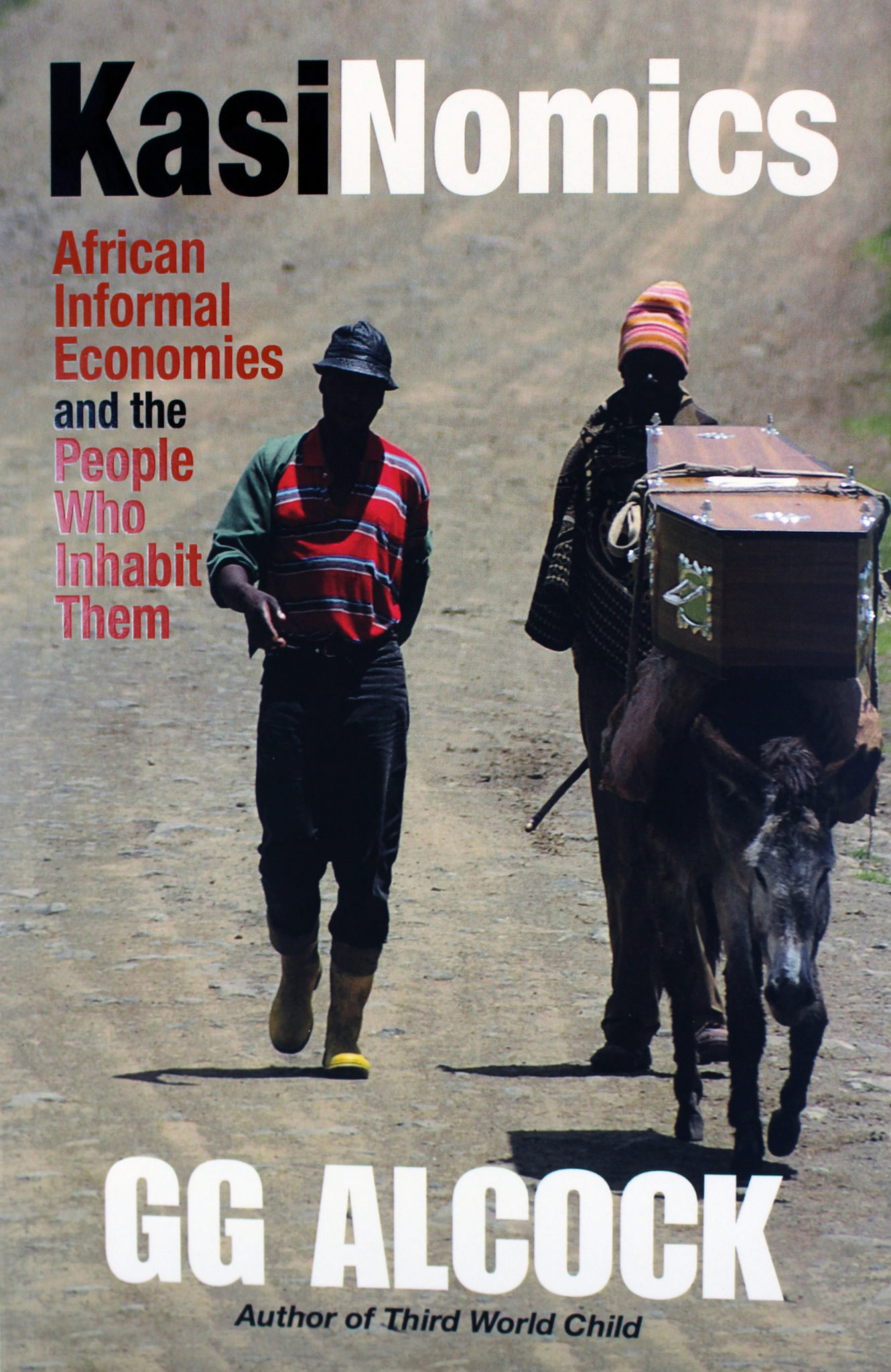SDG 5: gender equality
Higher levels of political representation for women in Africa have not necessarily advanced gender equality, with this disparity most acutely experienced at the grassroots level

The Under Secretary-General of the United Nations Entity for Gender Equality and the Empowerment of Women (UN WOMEN) Phumzile Mhlambo-Ngcuka, who is from South Africa. Photo: RODGER BOSCH / AFP
By Helen Grange
Gender equality is arguably one of the most elusive of the UN’s Sustainable Development Goals (SDGs). Most African countries have embraced progressive legislation addressing gender disparity, but the reality is that women remain disenfranchised on a wide scale, with some countries actually regressing in respect of women’s empowerment. Research findings exemplify this vexing situation. The World Economic Forum’s 2018 Global Gender Gap index assessed 149 countries according to their levels of women’s economic participation, education, health and political empowerment, and found that as a region, sub-Saharan Africa’s gender gap had widened in 2018 after six years of progress. Mali, the Democratic Republic of Congo (DRC) and Chad were among the 10 worst- performing countries. Although Zimbabwe (ranked 47th) closed the gap on wages, Mozambique (49th) had fewer women in senior and managerial positions. South Africa was ahead in many gender categories, but its position on wage equality declined to 117 from 114 the previous year, the Global Gender Gap index shows. Similarly, the 2018 SADC Gender Protocol 2018 Barometer, which is produced annually by the Southern Africa Gender Protocol Alliance – comprising women’s rights networks in all the 15 SADC countries as well as cross-cutting theme NGOs – shows that women’s representation in economic decision-making has increased by a single percentage point, or from 19% to 20%, over the past decade. According to the report, maternal mortality across most of the Southern African Development Community remains unacceptably high, and is declining too slowly to meet the SDG target of 70 per 100, 000 by 2030. The only exceptions are Mauritius and Seychelles.
“Teenage pregnancy, violence in schools, child labour and inadequate physical infrastructure continue to impact learning, enrolment, performance and completion rates among girls,” Lucia Makamure, a gender and public policy expert from Zimbabwe, told Africa in Fact. She adds that the available evidence shows that member countries in the region have failed to create enabling environments for all children. “For every step forwards for gender equality, there seem to be two steps backwards.” The vision of SDG 5 is that by 2030 men and women should be treated equally in social and economic contexts, as well as in other parts of society – and, in particular, that they should not face discrimination on the basis of their gender. But if current inequities between genders persist, analysts agree this goal will remain unattained for many decades to come. One of the most notable gender inequities in Africa is women’s lack of access to land ownership. Only 13% of women, compared to 40% of men, have sole ownership of all or part of the land they own, according to a 2018 Regional Outlook on Gender and Agrifood Systems, a joint report by the UN Food and Agricultural Organisation and the African Union. In Cameroon, for example, women undertake more than 75% of agricultural work but own less than 10% of the land. UNICEF identifies comparable disparities in Kenya, Nigeria, Tanzania and other countries in sub-Saharan Africa.
Hindered access to education is another root cause of gender inequality on the continent. The latest Unesco Institute for Statistics (UIS) figures reveal that Africa is home to more than half of the global total of out-of-school children of primary school age. Girls are 56% more likely to never have enrolled in school than boys at 42%. Educational equity has not been achieved even in Zimbabwe, which is known for its high literacy rate. “The majority of women have limited access to education, and yet access to education and training has a major impact on women’s potential to access and benefit from income-generating opportunities, which improve their overall wellbeing,” Dr Sithembiso Nyoni, Minister of Women’s Affairs, Community, SMME Development told media in Harare on International Women’s Day on 8 March this year. Low levels of female education are also a key factor in the slow pace of Africa’s fertility transition to lower birth rates because education delays entry into marriage and increases the chances of employment. “Evidence from 22 countries in sub-Saharan Africa shows that increasing women’s education across different socio-economic groups is very effective in reducing overall fertility levels,” write professors Sabu Padmadas and Nyovani Madise in an article published by the International Institute for Sustainable Development in April this year.
They add that while it is the economically privileged who attain higher education and have fewer children, the effects of more educational provision gradually trickle down to the less privileged through a diffusion of ideas such as smaller family size and social development. However, against the backdrop of struggle to make significant strides toward the UN’s 2030 SDG 5 goals, some good examples show that efforts continue to push the gender agenda forward. Tunisia recently approved legislation giving women equal inheritance rights, despite resistance from religious and conservative quarters. In Ethiopia, under Prime Minister Abiy Ahmed, some 50% of parliamentarians are now women; he has also appointed a woman, Sahle-Work Zewde, as president. Yet, at the same time, the sometimes glaring disparities in achieving equality for women are reflected in the fact that significant gender disparity still exists in Ethiopia’s higher education sector. Malawi has adopted a programme that aims to encourage and enable women to engage in agriculture. Botswana now has a special economic empowerment programme for women that aims to assist them in increasing their resources as agricultural producers. In Kenya, technological innovations such as M-Pesa and the Kenya Women’s Finance Trust’s mobile banking solutions have unlocked opportunities for millions of women in the country’s rural areas, who are vigorously responding to these liberating technologies.
Overall, the statistics show that South Africa is the most gender-equal of all Africa’s 55 countries, followed by Rwanda, Namibia, Mauritius and Malawi. However, these scores are misleading if read without a deeper analysis, cautions Professor Deirdre Byrne of the Institute for Gender Studies at the University of South Africa. Indices for human development group education with health, but these need to be disaggregated, she argues. “So it is possible, as in Tunisia, for women to be given special attention in childbirth – thus decreasing the rate of maternal mortality – but not to be as well educated as men,” she told Africa in Fact. Moreover, she adds, higher levels of political representation don’t necessarily advance gender equality at the grassroots level. “The South African parliament has the highest number of women members in Africa. This makes it more likely that these MPs will fight for the concerns of women, but this is not guaranteed.
”Activists at the grassroots level experience this disparity between policy and reality most acutely. In largely isiXhosa township communities in Cape Town, the role of caring for children or other family members still falls mainly or exclusively on the women, which often forces them to leave education early, says Sian Morris, the Cape Town based programme manager for Global Vision International, a social enterprise that runs high-impact volunteer and international education programmes. “Nationally, some 18% of females leave education early to due to family commitments as compared to 0.4% of males,” she told Africa in Fact. Ultimately, the greatest obstacle to gender equality in Africa is patriarchy – which means “the rule of the fathers” – posits Byrne. “Patriarchy is responsible for many damaging assumptions about gender,” she says. Among these assumptions are widespread ideas such as “women are stupid”, “men are emotionally unskilled” and “a woman’s place is in the kitchen and/or looking after the children”. “These assumptions form the foundation for many behaviours that keep women in positions of oppression and subordination, and can only be rooted out through education,” Byrne concludes.
Helen Grange is a seasoned journalist and editor, with a career spanning over 30 years writing and editing for newspapers and magazines in South Africa. Her work appears primarily on Independent Online (IOL), as well as The Citizen and Business Day newspapers, focussing on business trends, women’s empowerment, entrepreneurship and travel. Magazines she has written for include Noseweek, Acumen, Forbes Africa, Wits Business Journal and UJ Alumni magazine. Among NGOs she has written or edited for are Gender Links and INMED, a global humanitarian development organisation.













